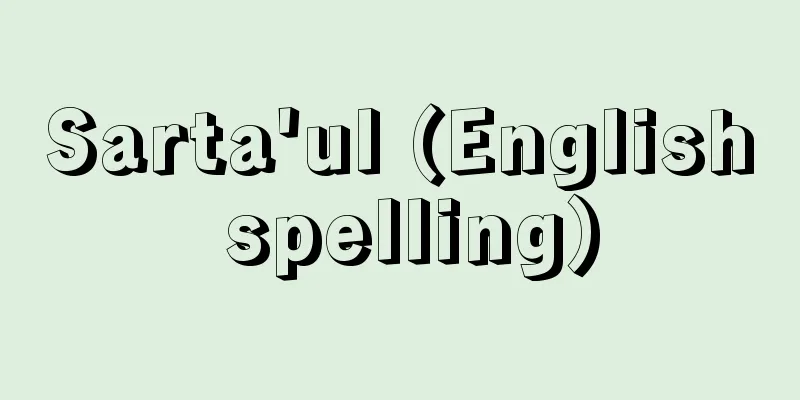Ikuta Style

|
The name of a school of koto music. A school that arose from differences in the traditions of koto group songs and associated danmono. Kitajima Kengyo Joshun (?-1690), a disciple of Yatsuhashi Kengyo, known as the father of modern koto music, had the intention of changing his style and going independent, but passed it on to Ikuta Kengyo Ikuichi only before he died early, so Ikuta Kengyo inherited his will. Therefore, in later generations, the traditions passed down from Kitajima Kengyo onwards came to be called Ikuta-ryu, according to the Shin-Yatsuhashi-ryu Denjusho and other documents. Later, in Osaka, Kikunaga Kengyo Taichi (1742-1824) organized the traditions and passed them on to the Osaka Ikuta-ryu Kikusuji. Meanwhile, Mitsuhashi Kengyo Yanoichi (?-1760) came to Edo and, under his disciple Kikuzaki Kengyo Kakoichi, spread the tradition mainly in the residence of the Edo Soroku (official who was above the Kengyo and Koto). This Edo Ikuta school was the mainstream of Edo koto music until Yamada Kengyo appeared in the Bunka era (1804-1818) and founded Yamada-ryu koto music, and it continued to be passed down even after that. In Kyoto, Yasumura Kengyo Yorichika (?-1779), who was said to be a student or disciple of Mitsuhashi Kengyo, organized the organization of traditional music. The tradition was passed down among blind musicians, mainly in craftsmen's houses, and branched out and was passed down in various places such as Edo, Osaka, Kyushu, Nagoya, and Kyoto by the Kengyo (masterless conductors) of Yasumura, including Hasetomi, Ishizuka, Hisamura, Kawarasaki, Fujiike, and Urasaki. Today, it is used to refer to ordinary koto music other than the Yamada school. The Ikuta school is centered on instruments, especially the shamisen, and has a different feel from the Yamada school, which is centered on joruri-style songs and the koto. The koto instruments and the shape of the plectrum are also different. [Keiko Hirayama] [Reference] | |Source: Shogakukan Encyclopedia Nipponica About Encyclopedia Nipponica Information | Legend |
|
箏曲(そうきょく)の流派名。箏組歌(ことくみうた)およびこれに付随する段物(だんもの)などの伝承の差によって生じた一流派。近代箏曲の祖と称される八橋検校(やつはしけんぎょう)門下の北島検校城春(じょうしゅん)(?―1690)は、手法を改め独立の意志があったのに、生田検校(いくたけんぎょう)いく一だけに伝えて早く没したため、その志を生田検校が受け継いだ。したがって、後世、北島検校以来の伝承を生田流と称するようになったと、『新八橋流伝授書』などに記されている。その後、大坂においては、菊永検校太一(1742―1824)が伝承を整理し、大坂生田流菊筋に伝えるに至った。一方、江戸には三橋(みつはし)検校弥之一(?―1760)が下って、その門下の菊崎検校加幸一以下、江戸の惣録(そうろく)(検校、勾当(こうとう)の上にあり統轄する官)屋敷を中心に伝承を広めた。この江戸の生田流は、文化(ぶんか)年間(1804~1818)に山田検校が現れ山田流箏曲を創始するまでは、むしろ江戸箏曲の主流であり、その後も伝承は行われた。また、京都においては、三橋検校と同門あるいは弟子ともいわれる安村検校頼一(?―1779)が伝承曲目組織の整理を行った。その伝承は職屋敷を中心に盲人音楽家の間で行われ、安村門下の長谷富(はせとみ)、石塚、久村、河原崎(かわらさき)、藤池、浦崎の各検校によって、江戸、大坂、九州、名古屋、京都など各地に分流されて伝承された。現在では、山田流に対して、それ以外の普通の箏曲を総称する場合にいう。生田流は、楽器本位、とくに三味線中心であり、浄瑠璃(じょうるり)風な唄(うた)本位、そして箏(こと)中心である山田流と趣(おもむき)が異なる。また、箏の楽器や爪(つめ)の形なども異なる。 [平山けい子] [参照項目] | |出典 小学館 日本大百科全書(ニッポニカ)日本大百科全書(ニッポニカ)について 情報 | 凡例 |
<<: Iguchi (sake cup) - Iguchi (English spelling) boletus
Recommend
Battle of Anegawa
A battle fought in the Anegawa River basin in Omi ...
Fireman - Kasha
Eunuch. See the entry for 'fire'. Source :...
Red Danish (English spelling)
...resistant to cold. (5) Red Danish: Native to D...
Cargo method - Kamotsu method
…the trading laws of Nagasaki trade in the early ...
The Broken Jug (English: The Broken Jug)
A one-act comedy by the German playwright Kleist....
Stone-standing monk - Ishitatesou
...Later gardening books also mentioned the taboo...
ISO Metric Threads - ISO Metric Threads
…After its establishment, it was widely used in m...
Fetal movement
This refers to the movement of the fetus inside t...
Antinoos
…He was the first emperor in Roman history to hav...
Tenpo Rokkasenmono
A type of Kabuki work. A group of works based on t...
Oppekepe
This song became popular in the middle of the Meij...
Patriotic Public Party
(1) A political association for freedom and civil...
Lee Tae-jun
Korean novelist. Born in Gangwon Province. He beg...
Akishima [city] - Akishima
Located in central Tokyo, this city is to the west...
Arabian tahr
It is a member of the Bovidae family of the Mamma...









